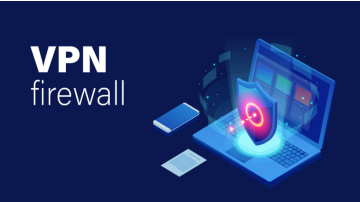
A virtual network is a community in which all devices, servers, virtual machines, and records centers which are linked are finished via software and internet technology. It allows the network to be expanded in a way because it needs to for height efficiency, in addition to several other benefits.
Conversely, a virtual community doesn’t follow the conventional rules of networking because it isn’t stressed at all. Consequently, all gadgets that interact with each other in the network achieve this via net generation, allowing them to have an additional reach. The community itself is infinite because of the internet.
How does Virtual Network Work?
A virtual community uses the current era to create an extended community that works wirelessly. It consists of
-
vSwitch software: Virtualization software program on host servers, permitting you to install and configure a digital network
-
Virtual network adapter: Creates a gateway among networks.
-
Physical community: Required as a number for the virtual network infrastructure
-
Virtual machines and devices: Devices that connect to the community and permit numerous functionality.
-
Servers: A part of the community host infrastructure
-
Firewalls and protection: Designed for monitoring and preventing safety threats.
Classes of Virtual Networks
The main three classes of virtual networks are:
VPN
VPN stands for a digital private network. It uses the net to connect two or more present networks. This internet-primarily based virtual community lets customers log in from anywhere to get admission to the bodily networks which can be linked. VPNs are used to protect net use on public WiFi and ensure cozy browsing. A VPN is created while statistics attached to packets define routing statistics that take users to the relevant address. In doing this, a tunnel of addresses is created, encrypting the surfing records and making it possible to get admission to statistics remotely. VPNs supply a small-scope, completely digital community that uses the internet to allow humans to attach.
VLAN
A digital LAN community, or VLAN, uses partitions to organize gadgets on a LAN community into domain names with resources and configurations applied to each. Using a VLAN lets in for higher protection, tracking, and management of the devices and servers within a particular domain. It is specifically genuine for extensive networks to make them vulnerable to assault domains.
VXLAN
VXLAN is a digital extensible neighborhood region network. Your level 3 network infrastructure offers a tunnel into level 2 in this community. Digital switches create endpoints for each tunnel, and every other piece of generation, known as a bodily or virtual base case, can route facts among endpoints.
Benefits of Virtual Networking
-
Digital networking allows humans to enter their networks from anywhere in the world.
-
Through virtual networking, you may make your networks cozier by using capabilities like tunneling encryption and domain segments.
-
With the aid of course features from one place to any other, corporate businesses can reduce the amount of hardware they need to access, preserve, and monitor.
-
Because it’s digital and now, not a lot of hardware is needed to create a digital community, it’s simpler to scale at a lower cost of possession. Scaling takes some tweaks to the software and configurations, however, does no longer always require a variety of equipment.
-
Using reducing hardware, organizations benefit through saving money on hardware fees and protection.
-
Due to this fact, networks may be configured fast.


.webp)




